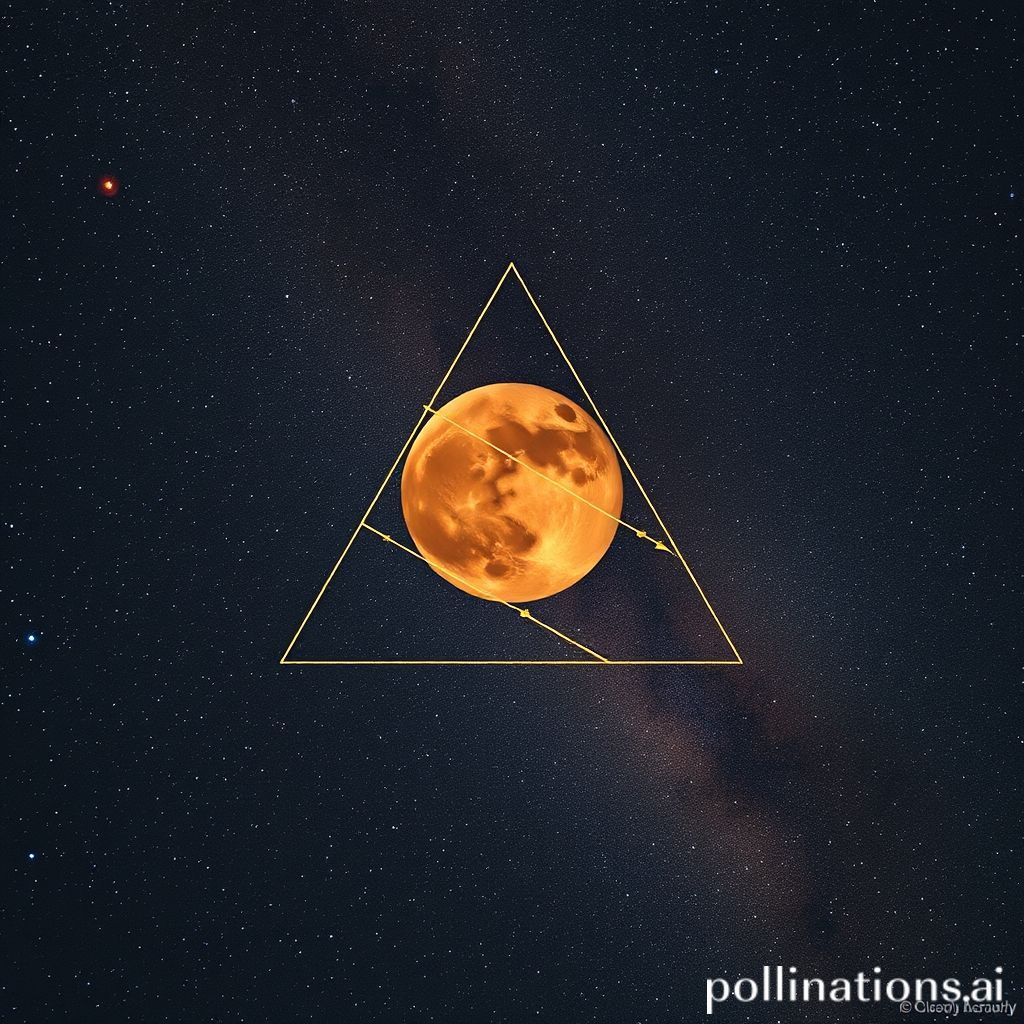
Mars joins the Spring Triangle this week: Here’s when and how to see it
Hello fellow stargazers!
Have you been looking up at the night sky lately? If not, you absolutely should because a celestial treat is in store this week. The vibrant red planet Mars is joining the prominent Spring Triangle asterism, creating a beautiful sight that's easy to spot even with the naked eye.
This is a fantastic opportunity for beginners and seasoned astronomy enthusiasts alike. Let's dive into when and how to catch this cosmic alignment.
What is the Spring Triangle?
The Spring Triangle isn't an official constellation but rather a readily recognizable asterism. Asterisms are patterns of stars within constellations or across multiple constellations that form easily remembered shapes. The Spring Triangle is formed by three bright stars:
*Arcturus: The brightest star in the constellation Bootes, Arcturus has a distinctive orange hue.
*Spica: The brightest star in the constellation Virgo, Spica shines with a cool blue-white light.
*Denebola: The second brightest star in the constellation Leo, Denebola is a brilliant white.
Finding the Spring Triangle is generally quite easy. Look towards the eastern sky after sunset. Arcturus will be the brightest and highest of the three. From there, locate Spica and Denebola to complete the triangle.
Mars Joins the Party: A Celestial Alignment
This week, Mars will appear to drift close to the Spring Triangle, adding its distinctive reddish glow to the already stunning asterism. The red planet will appear near Denebola forming a loose quadrilateral shape with the three stars of the Spring Triangle. This close proximity makes it even easier to find Mars. Its reddish color will stand out from the white and bluish hues of the surrounding stars.
When and Where to Look
*Timing: The best time to see this celestial alignment is from late evening until the early hours of the morning, starting this week and lasting for several days. The peak viewing period will vary slightly depending on your location but aim for a few hours after sunset.
*Location: Find a location with a clear view of the eastern horizon. Light pollution can make it harder to see fainter stars and planets, so try to get away from city lights if possible. A park, a field, or even a rooftop can provide a good vantage point.
*Direction: Look towards the eastern part of the sky. The Spring Triangle will gradually rise higher as the night progresses.
How to Observe Mars and the Spring Triangle
*Naked Eye: The easiest way to observe this alignment is with the naked eye. Allow your eyes to adjust to the darkness for at least 20 minutes. This will significantly improve your ability to see the stars and Mars.
*Binoculars: If you have a pair of binoculars, use them to get a closer look at Mars. You might be able to discern its disk-like shape and its reddish color more clearly. Binoculars can also help you pick out fainter stars in the vicinity.
*Telescope: If you own a telescope, this is a great opportunity to observe Mars in more detail. While Mars will appear relatively small, you might be able to make out some surface features, especially if the seeing conditions (atmospheric stability) are good.
What Makes This Alignment Special?
While planets regularly move across our sky, their proximity to bright stars or asterisms offers unique and aesthetically pleasing viewing opportunities. This particular alignment of Mars with the Spring Triangle is special for a couple of reasons:
*Brightness: The Spring Triangle stars are all relatively bright, making them easy to find. Mars is also quite bright at the moment, adding to the overall visibility of the event.
*Color Contrast: The red hue of Mars contrasts beautifully with the white and bluish colors of the Spring Triangle stars, creating a visually striking arrangement.
Other Celestial Events to Watch Out For
While you're out stargazing, keep an eye out for other celestial events happening this season.
Event | Description | Best Time to View
| |
Lyrid Meteor Shower | An annual meteor shower peaking in late April | Late April
Eta Aquariid Meteor Shower | Another annual meteor shower, best seen in early May | Early May
Full Moon | The full moon can be a beautiful sight, especially when it rises or sets | Varies each month
Tips for Stargazing
*Dress Warmly: Even on spring evenings, temperatures can drop, especially after midnight. Wear layers to stay comfortable.
*Bring a Red Flashlight: Red light preserves your night vision better than white light. Use a red flashlight to consult star charts or adjust equipment.
*Use a Star Chart or App: There are many excellent star chart apps available for smartphones and tablets. These apps can help you identify stars, planets, and constellations.
*Be Patient: It takes time for your eyes to adjust to the darkness. Be patient and allow yourself to become familiar with the night sky.
*Enjoy the Experience: Stargazing is a relaxing and rewarding activity. Take your time, enjoy the beauty of the night sky, and appreciate the vastness of the universe.
Conclusion
Don't miss out on this opportunity to see Mars join the Spring Triangle. It's a beautiful and easily observable celestial event that will enhance your appreciation for the wonders of the night sky. Grab your binoculars, head outside, and enjoy the show.
It's moments like these that remind us of our place in the universe. Looking up at the night sky connects us to something bigger than ourselves, inspiring a sense of awe and wonder. Happy stargazing!
Comments
Post a Comment